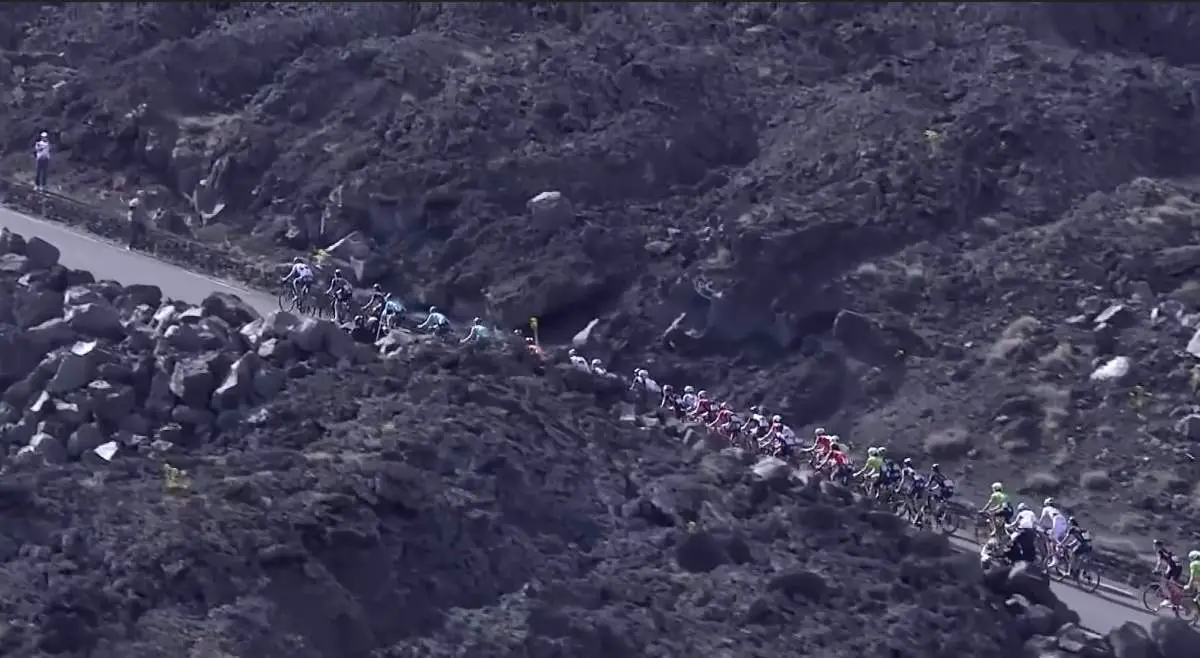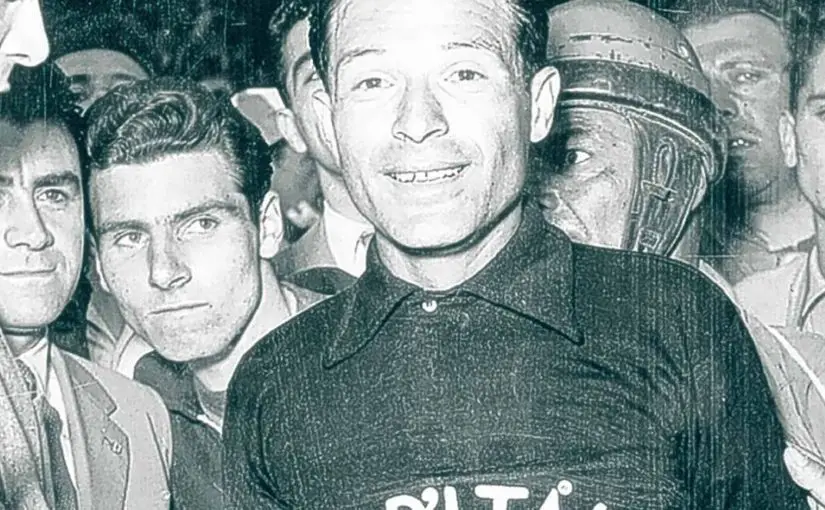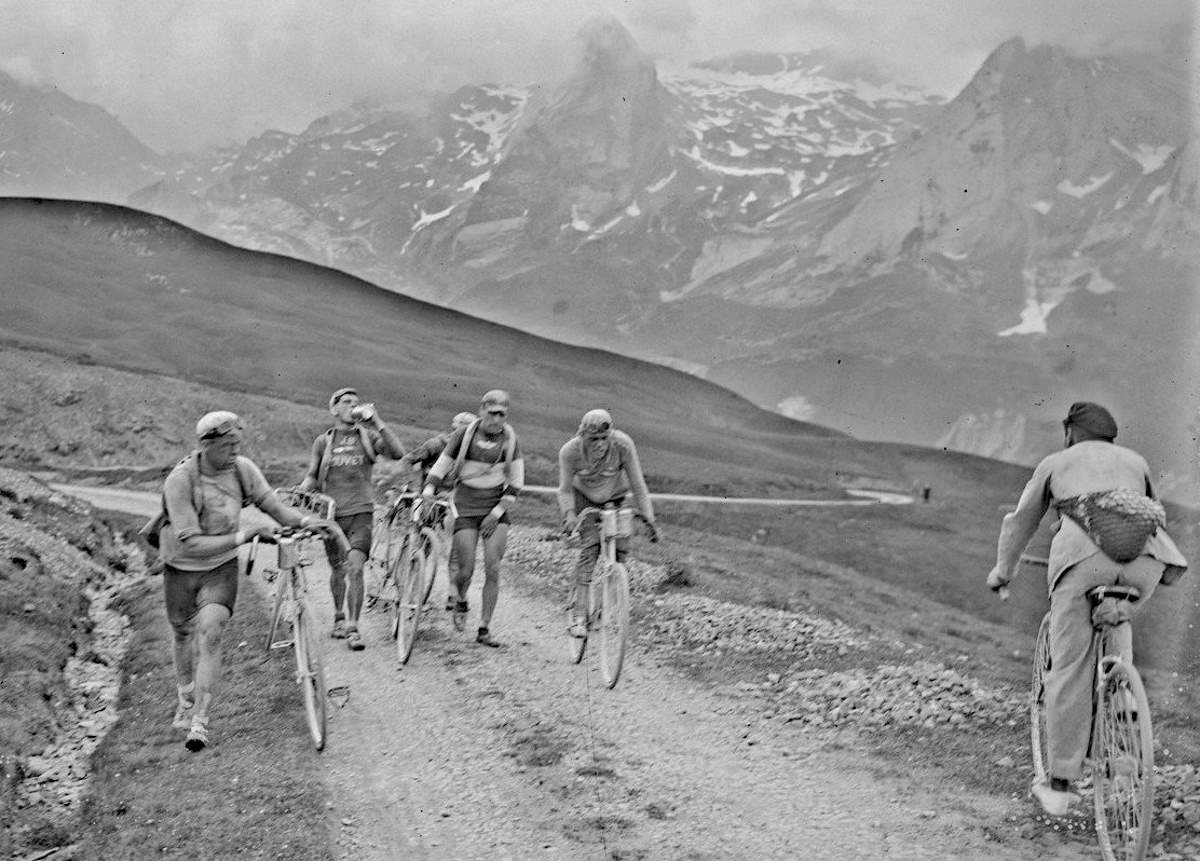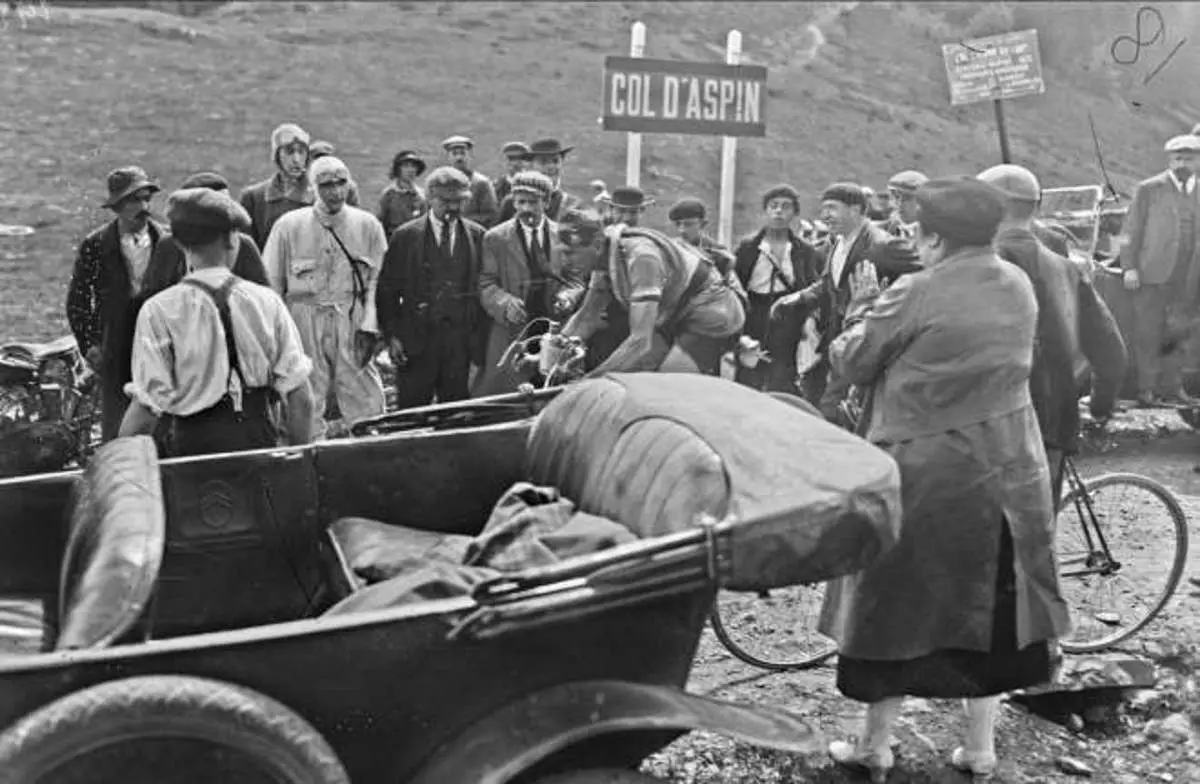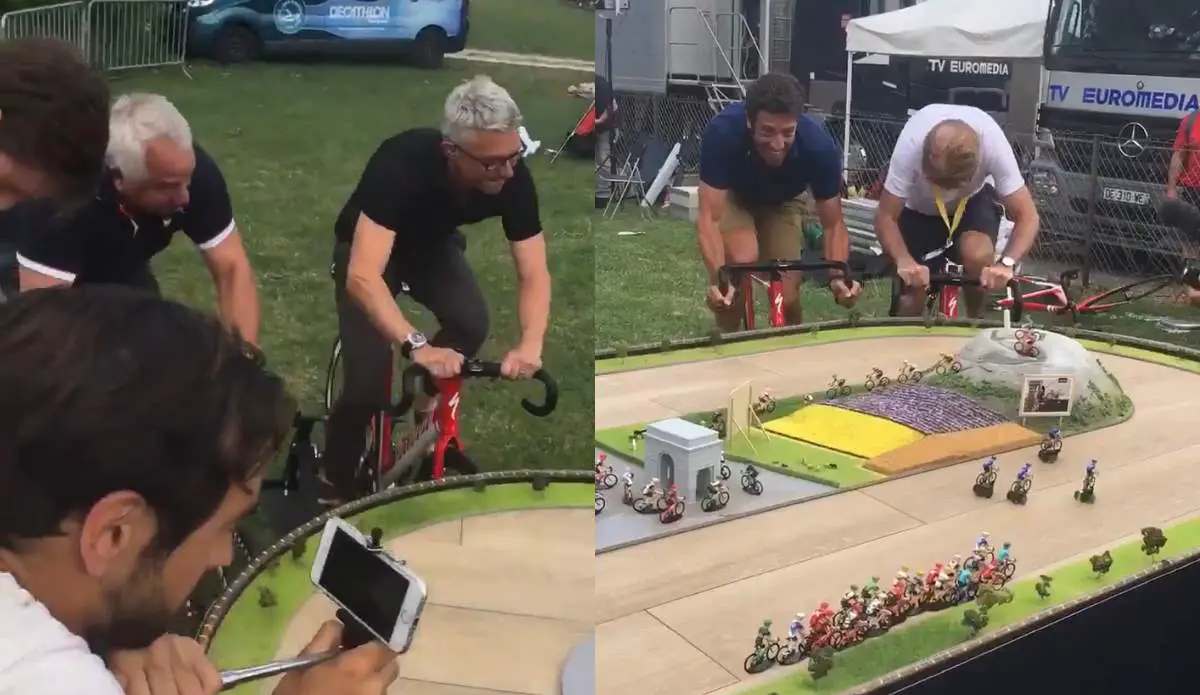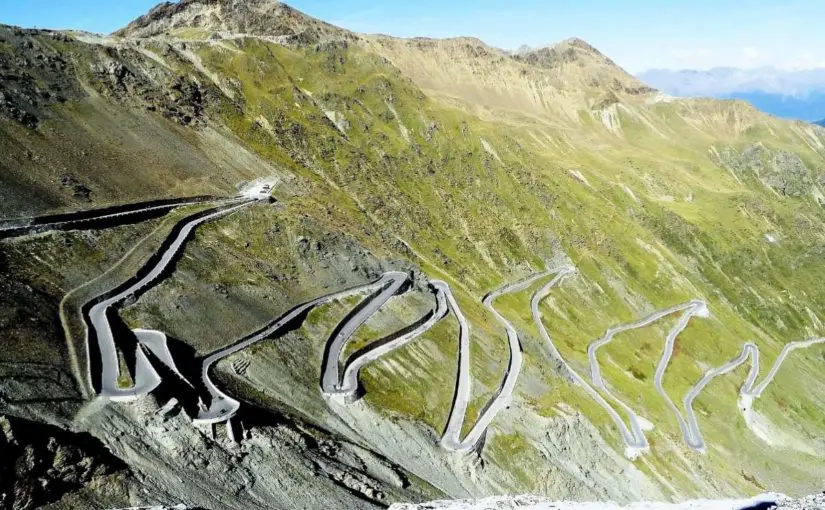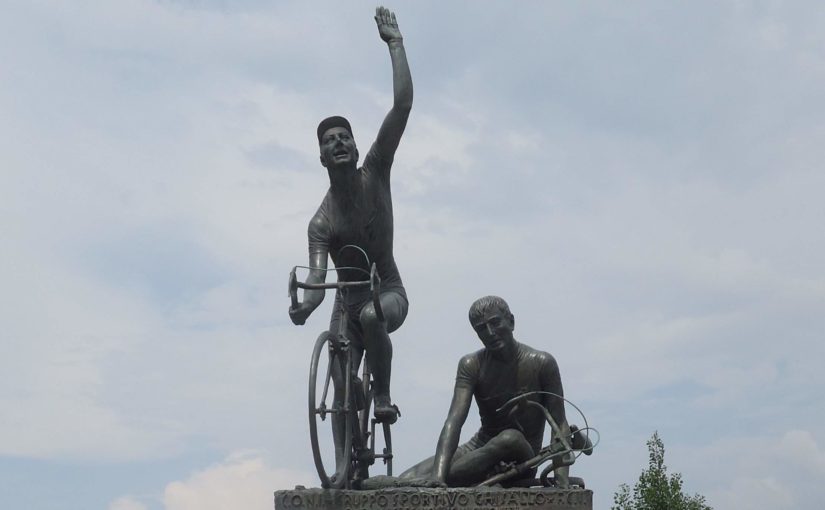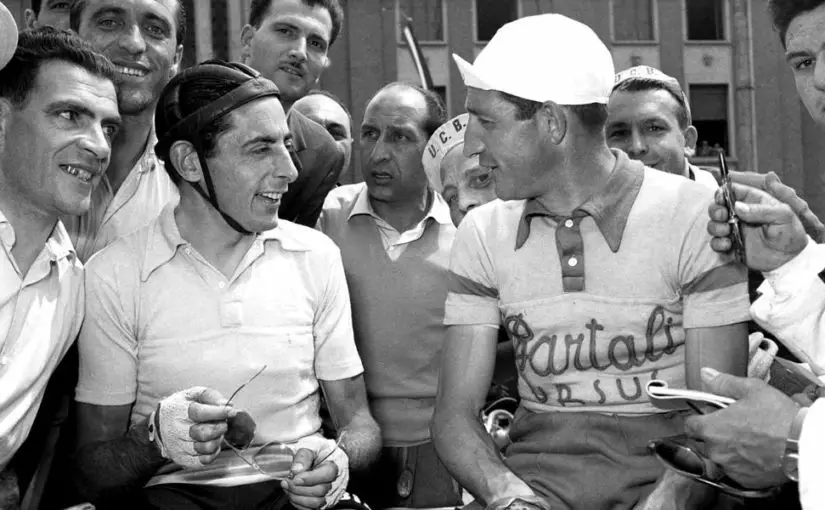Mount Etna is an active stratovolcano on the east coast of Sicily, Italy. With a height of currently 3,329 meters / 10,922 ft (this varies with summit eruptions), it is the highest active volcano in Europe outside the Caucasus, and also the highest peak in Italy south of the Alps. To date, the Giro d’Italia …
Category Archives: History and Legends
Black Jersey is Back
Between 1946 and 1951, the Giro d’Italia had a special jersey, “maglia nera” (English: black jersey), for the last-placed rider. There was a real competition between many riders, to win this highly-coveted jersey. The last-placed rider would ride the final victory lap with the race winner each year around the historic Vigorelli Velodrome in Milan.
A Mountain Pass during the 1925 Tour de France
Today’s historic photo of the day: a mountain pass during the 1925 Tour de France. Frenchman Roger Lacolle (Météore) is leading the group (in the left, walking). The rider going the opposite way is a native, not a competitor.
Jean Alavoine atop Col d’Aspin (Tour de France 1922)
Today’s historic photo of the day: on Wednesday, July 5, Frenchman Jean Alavoine (Peugeot-Wolber) crosses over the Col d’Aspin during the Tour de France 1922, stage 6. It was a monster 326-kilometer stage from Bayonne to Luchon, which contains three major climbs: Col d’Aubisque, Col d’Aspin, and Col de Peyresourde. Alavoine won the stage in …
Continue reading “Jean Alavoine atop Col d’Aspin (Tour de France 1922)”
Watch: The race between LeMond, Kelly, Flecha, and Edwards
Cycling journalist Laura Meseguer posted a video on her Twitter account: three great retired cyclists, Greg LeMond, Sean Kelly, and Juan Antonio Flecha, and a British former triple jumper and a keen recreational cyclist Jonathan Edwards racing against each other using a custom setup. They jumped on their stationary bikes which were fitted to a …
Continue reading “Watch: The race between LeMond, Kelly, Flecha, and Edwards”
48 Tornanti di Notte: Downhill from Stelvio, in the night, with no hands, no brakes!
This is the story of the last record attempt of Giuliano Calore, a racing cyclist, world champion of extreme cycling, holder of 13 records, and won 98 medals. He was born in Padova (north-east Italy) in 1938. The movie is titled “48 Tornanti di Notte” (48 Hairpin Bends at Night) tells about his most impressive …
Koblet-Coppi battle, Giro d’Italia 1953
Hugo Koblet, “Pédaleur de charme“, and Fausto Coppi, “Il Campionissimo”, two post-war era giants. They were good friends, until the Giro d’Italia 1953 edition. After that Giro, they would never speak to each other again. But, what happened?
Il Lombardia
Il Lombardia (formerly known as the Giro di Lombardia), “Classica delle foglie morte” (the classic of the dead [falling] leaves), is traditionally the last of the five classic “Monuments” of the cycling season. The first edition was 1905. It was then called Milan-Milan. It gained the name “Giro di Lombardia” in 1907. The route has …
Coppi e Bartali, Bartali e Coppi
Fausto Coppi and Gino Bartali: two cycling legends of Italy. The rivalry between them is perhaps the most famous sporting duel in history. It has been started during World War II and continued afterward. In December 2012, RCS Sport, the organizer of the Giro d’Italia, has put together 100 journalists to rate the greatest moments …
Fat tires – not a new invention
In recent years, fat tire bikes are getting quite popular. Before 2006, They were made only by custom frame-builders who liked to pedal in the snow (or sand, like beaches). Then, in 2006, a Minnesota-based bike manufacturer, Surly Bikes, mass-produced the first notable bike in the “fat” genre with its Pugsley frame. They still build …
